Your lower back, though not the most attractive muscle group however, it is one of the most useful. The area of your back that is lumbar is the primary bodyweight-bearing region in your back. Therefore, the more strong your lower back muscles are, the more comfortable you’ll be able to perform in terms of posture and mobility. Additionally, you’ll less likely to experience lower back discomfort. It’s a difficult part to work out because these muscles tend to be deep and are supported by the muscles that are superficial such as the abs and glutes. There are handful of exercises that should be already a part of your routine and certain lower back exercises you can incorporate to increase the strength and endurance.
Lower Back Muscles
One of the most important aspects to get the most value from your exercise is understanding the anatomy of your. The lower back region is comprised of numerous muscles. There are two major areas to be considered in your efforts to build strength. They are the transversospinalis, and muscles of the erector Spinae. Both of them are intrinsic muscles which sit deep in the body, right next to the vertebrae and they are responsible for the motion in the spinal column. They are also supported by your glutes, abs as well as hamstrings and hips. Due to their dimensions, position and the surrounding muscles, they may be difficult to train particularly.

Transversospinalis Muscles
The transversospinalis muscle is comprised of three groups namely the multiifidus, the rotatores and the semispinalis muscle. They are located in different layers and span the length of the back, working to extend and rotate your spinal column.
Erector Spinae
Three muscle groups comprise the erector Spinae which include the iliocostalis longissimus, and the spinalis. Similar to the transversospinalis group they also stretch along the back, and are accountable for straightening the spine.
The benefits of having a strong Back
The deepness and the intrinsic nature of lower back muscle indicate that having strength in this region will be more functional rather than appearance. They’re not muscles that help you look attractive but they can enhance your overall health. Lower back pain is common due to a variety of causes, including sitting for long periods of time as well as poor posture and poor form while doing exercise or playing sport. Muscles that are strong in the lower back can counteract these and avoid injury. Additionally, you’ll be able to perform better in the gym as well as in other sports like running or playing rugby, or hockey. Additionally, strong and strong lower back muscles aid in keeping you active even as you age and you’ll be able to rip an ad on the dance floor when you’re 90 and living in a retirement residence.
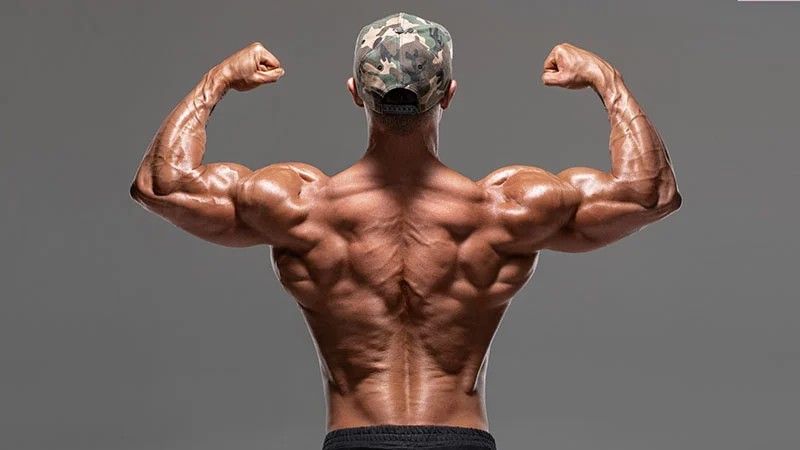
Best Lower Back Exercises
The most effective results when it comes to increasing the strength and mass of your muscles is to work them throughout their entire range of movement. For low back muscle it’s not difficult to find them contracted isometrically during a variety of your regular exercises. but it’s getting a concentric contraction that’s a bit more challenging. Combining exercises with little or no concentric contraction, aswell with exercises specifically designed at that area, will give you the best chance of success. The combination of lower back exercises listed below is directly from Jeff Cavaliere, who created the ATHLEAN-X program. Jeff was the head of Physical Therapy and Strength Coaching Assistant of the New York Mets. He also holds earned a Masters degree in Physical Training. He is a certified Strength and Conditioning Specialist. His recommendations are founded on the science behind movements, and established techniques for repairing injuries.
1. Deadlift
Deadlifts can be a fantastic compound exercise to build strength in your glutes quads, hamstrings and traps. But, they aid in building the strength of your lower back, in a modest way. If you do the exercise correctly it is recommended to be able to hold an isometric position through your back, ensuring that your body straight during the exercise. There will be the sensation of a concentric contraction when you get to a vertical position. But don’t try to cheat on this exercise and force it to do more by pulling backwards or extending too far on the upper. It’s a movement that drives your hips that isn’t done in any other way than that could cause injuries and leave you walking as if you’re hundred years old.
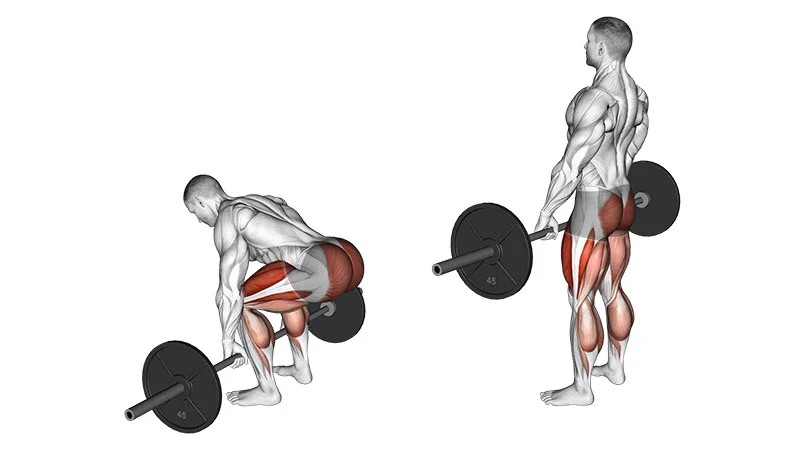
Steps
- Place yourself in front of your bar with your legs hip-width apart. You’ll be knee-bending towards the end of the movement.
- Place the bar with an overhand grip, with the bar at the shoulder length.
- Straighten the bar till your entire body straight and your arms straight, and the bar rests between your thighs.
- Your knees will initially straighten and then your body will begin to tilt in the hips. Remember to keep your neck and back as straight as you can when doing this exercise.
- The standing position in the vertical direction that you will achieve at the peak of this exercise is where you’ll notice a small amount of concentric tightness in your lower back.
- Lower the bar until it is back to the floor, using controlled movements.
2. Kettlebell Swing
Like the deadlifts kettlebell swings are an exercise that involves hip-hinging. You’ll be using your upper back muscles and lower back to support the lower body throughout the swing and you’ll get a tiny concentric contraction towards near the end of the movement. As with the deadlift, make sure you don’t shift into using your back for the swing or you’ll end up hurting yourself. The best part about this exercise for conditioning is that it can help develop endurance and increase athleticism by trying to do longer sets.
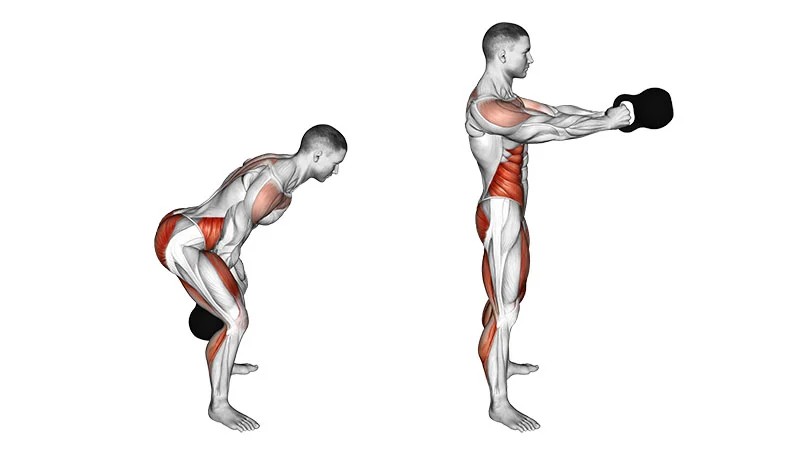
Steps
- Place your feet slightly larger than shoulder width apart, with the kettlebell placed on the floor behind you.
- Knees bend to grasp the kettlebell in front of you. Be sure to tilt the hips and push your butt forward. Keep your chest straight and your back straight.
- Move forward using your hips while in an upward thrust as your knees are straight, apply this momentum to lift the kettlebell until it reaches the level of your shoulders.
- Repeat the set in the loop in a continuous fashion for the entire set.
3. Hyperextension
Hyperextensions are often criticized due to their namehyper is a word that sounds threatening. But this exercise is fantastic to strengthen the lower back muscles. You not only get the full flex of your back and a full flexion, you also experience the concentric contracting of the muscles and you can add weights to boost the effectiveness. The trick to perform the exercise without adding unnecessary strain to the lower back area is to raise your body into an upright position and not an extended position. It still allows you to engage across the entire range of motion without the risk of. Increase your strength to a higher level by using dumbbells as your weights, and then adding an upper row to incorporate your back muscles in your exercise.
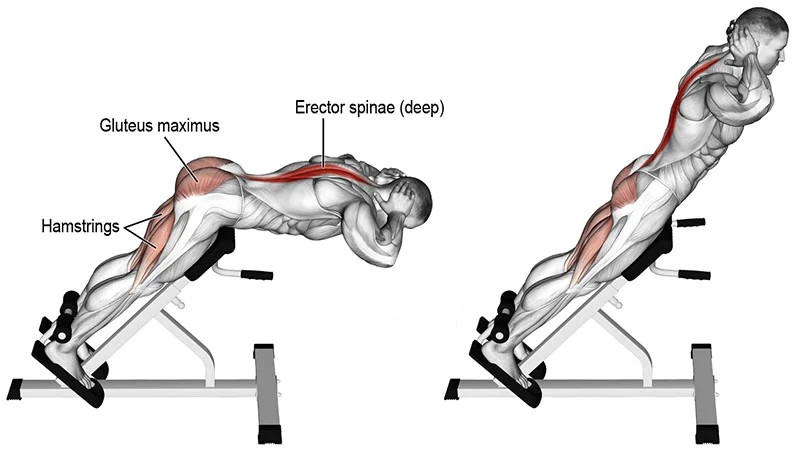
Steps
- Set your preferred weights on the floor in side of the machine so that you can grab them quickly. them.
- Place your body into the machine, making sure you’re bending your hips.
- Reduce your torso until you’re looking down at the floor while your spine is completely bent. If you’re using weights take them out during your time on the floor.
- Concentrate on using your back to lift your torso to ensure your back is in a straight position. Make sure your back isn’t bent more than straight. If you’re looking to strengthen your back muscles in the upper part simultaneously you can add a row at the top.
- Lower yourself again using the control.
4. Bridges
Bridges are a great lower back strengthening exercise that can stimulate the muscles through the use of a low-intensity and high-volume exercise. Make use of those muscles in your back to push the extension when your hips are at the highest point of movement. This is the most efficient method of achieving the desired level of engagement. Bridges can also help your glutes simultaneously. This is beneficial because glutes are just one of the muscles which help support your lower back and you’ll get an energised, toned and firm butt.
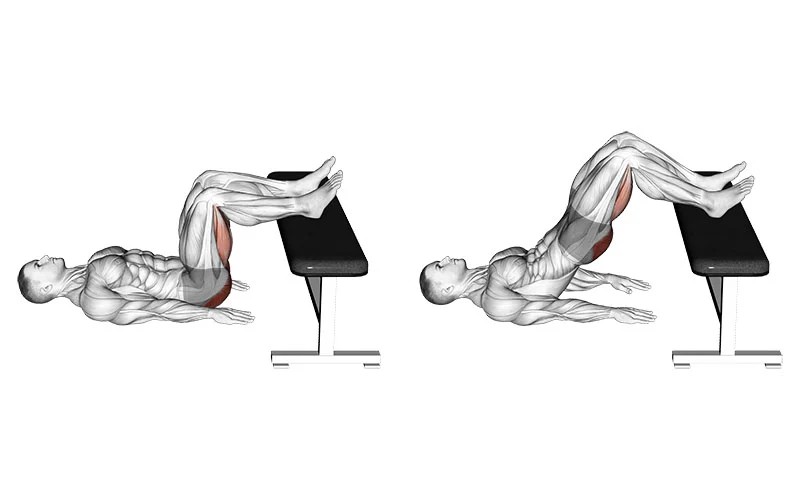
Steps
- Lay on your back with your feet firmly on a weight or box machine chair. You just need to ensure that it doesn’t move. Your hips and knees should be bent 90 degrees.
- Lift your glutes, hips, along with your lower back muscles until your body is straight.
- Lower your hips back to the floor in a controlled manner.
5. Superman
Supermans can also be an effective exercise for correcting posture that doesn’t require a lot of weight. All you require is your body and a floor. Similar to bridges, this exercise will work to engage the glutes and lower back, however it will let you perform more repetitions.
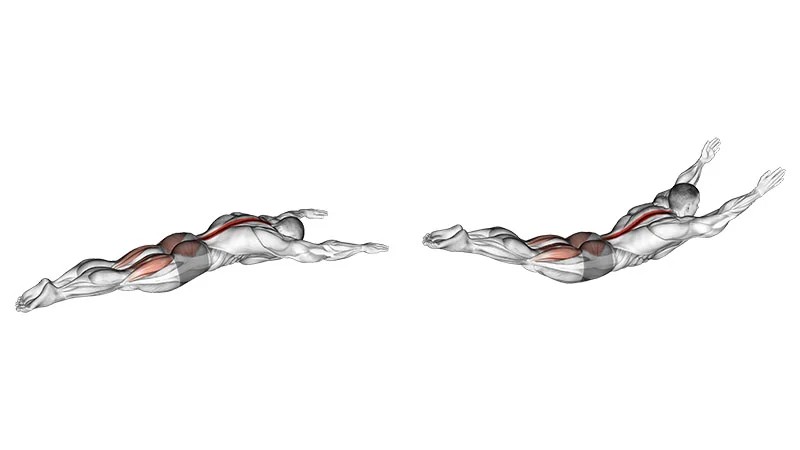
Steps
- Lay face down on the floor with your arms spread towards the side and your palms lowered.
- Lift your arms as well as your feet, and knees off of the ground and hold your weight to the ground with your hips. You should feel the tightening in your glutes as well as the lower back.
- Do this for 3 seconds and then lower your legs and arms back to the ground.
Lower Back Pain Red Flags and How to Resolve it
Lower back pain can be incredibly frequent. While strengthening the lower back muscles may assist in relieving some pain but there are also indicators to be on the lookout for that could also cause back pain. Fortunately, there are fairly simple methods to fix these warning signs.

1. Examine your hip flexors.
The tightness of your hip flexors is the most common reason for backache in the lower part of your. The hip flexors comprise an assortment of tendons and muscles which connect to your lower lumbar vertebrae, and extend towards the front of your hips. They permit you to lean forward at your waist and raise your knees towards your chest. The tightness in this region can be caused by a variety of factors, such as abdominal exercises as well as prolonged times of sitting. You can test the elasticity of these muscles using the Thomas Test. Keep one knee in place and pull it towards your chest while lying back on the bench. Do the other leg rest in a straight position against the bench? If not, you might suffer from tight hip flexors. The best approach to address this issue is to make sure you’re always stretching your hips. Include exercises like standing butterfly poses, pigeon poses, seated stretch and stretch stretches with figure four to your cooling-down routine.
2. Your Glutes are Not Strong enough
The glutes provide a substantial amount of a functional support for the muscles in your back. Insufficient strength in your butt may result in excessive pressure and strain on your lower back. The most effective way to assess your glutes is by looking at your body’s side when you look in the mirror. What is your fitness level? The more defined and muscular the shape of your butt, the more the support on your spine. Another good test is to perform an exercise called a hyper-hold. Make use of a ham-glute machine keep your body straight, so that your physique is in a straight position for at least 2 mins without cramps or failing. If you aren’t able to accomplish this, consider incorporating additional glute exercises into your daily routine. You can continue to do hyper-holds to increase your endurance, or you can try exercises such as hip thrusts, split lunges and barbell RDLs.
3. You are not able to stand for more than 20min without Pain or Shifting
The last red flag might not be aware of. Do you have the ability to remain still for 20 minutes without transferring your weight or feeling pain? If your posture appears than dancing you’ll must increase the endurance of your muscles of your back. Combining the exercises listed above is an excellent way to begin. It is also possible to increase your strength and endurance by using hyper-holds. You can gradual increase your length. Another thing to look at is the alignment the pelvis. Are you experiencing anterior pelvic tilt that makes your butt protrudes? If so, it can cause the low endurance. There are a variety of exercises you can try to improve your lower body posture.
FAQs
What are the muscles that make up the lower part of your back?
The lower back muscle anatomy comprises The Multifidus, Longissimus, Spinalis as well as the Quadratus Lumborum. The muscles in the lower back collaborate with the abdominal transverse muscles to increase the intra-abdominal pressure.
How can I regain muscles?
To create a strong lower back, muscles must exercise through a wide range of movement. Numerous studies have demonstrated that even for those who are well-trained by performing the exercise of a lower back every two weeks could quickly and significantly improve the strength of your lower back.
How can you build the lower part of your back?
The lower back muscles can be difficult, since the muscles are incredibly deep and are supported by other superficial muscles, such as the glutes and abs. The best method to increase strength is to exercise the muscles over their full range of motion, concentric and isometric contractions. Do kettlebell swings and deadlifts bridges, hyperextensions, and supermans. Certain of these are focused at the lower back, whereas others incorporate it as part of a bigger compound movement.
What are the most effective exercises to help lower back pain?
The most effective exercises for lower back pain can help strengthen your back muscles, and also your core. Try supermans and bridges, along with crunches and pelvic tilts. Once you’ve eliminated some of the discomfort and aches, you can move on to more advanced exercises like hyperextensions, kettlebell swings and deadlifts. Stretching is a good method to ease back pain and relax the muscles. Child’s posture knees to chest, cat/cow, as well as rotational stretches are all fantastic.
Are walking exercises good for lower back discomfort?
Walking can be a exercise that is low-impact for those who suffer from lower back discomfort. It will strengthen back muscles, promote good posture, and aid in helping you keep a healthy weight. Walking also helps strengthen the muscles of the lower part of your body which includes glutes, the back and legs, which is great for to increase blood flow and encouraging recovery of muscle. Walking is also an excellent way to unwind or unwind, breathe in fresh air and take in a amount of Vitamin D.
Do squats help lower back discomfort?
Squats can ease lower back pain since they can strengthen the entire area that includes the glutes, back, and legs. But, they must be done properly; otherwise they can cause further injuries due to improper technique. If you’re not sure you’re not sure, try front-weighted exercises using a goblet, or kettlebell. This will help you fall into your natural centre of gravity, and ensure that there’s no tension where it isn’t any. It’s also important to concentrate on falling straight down instead of swinging your hips up or down.






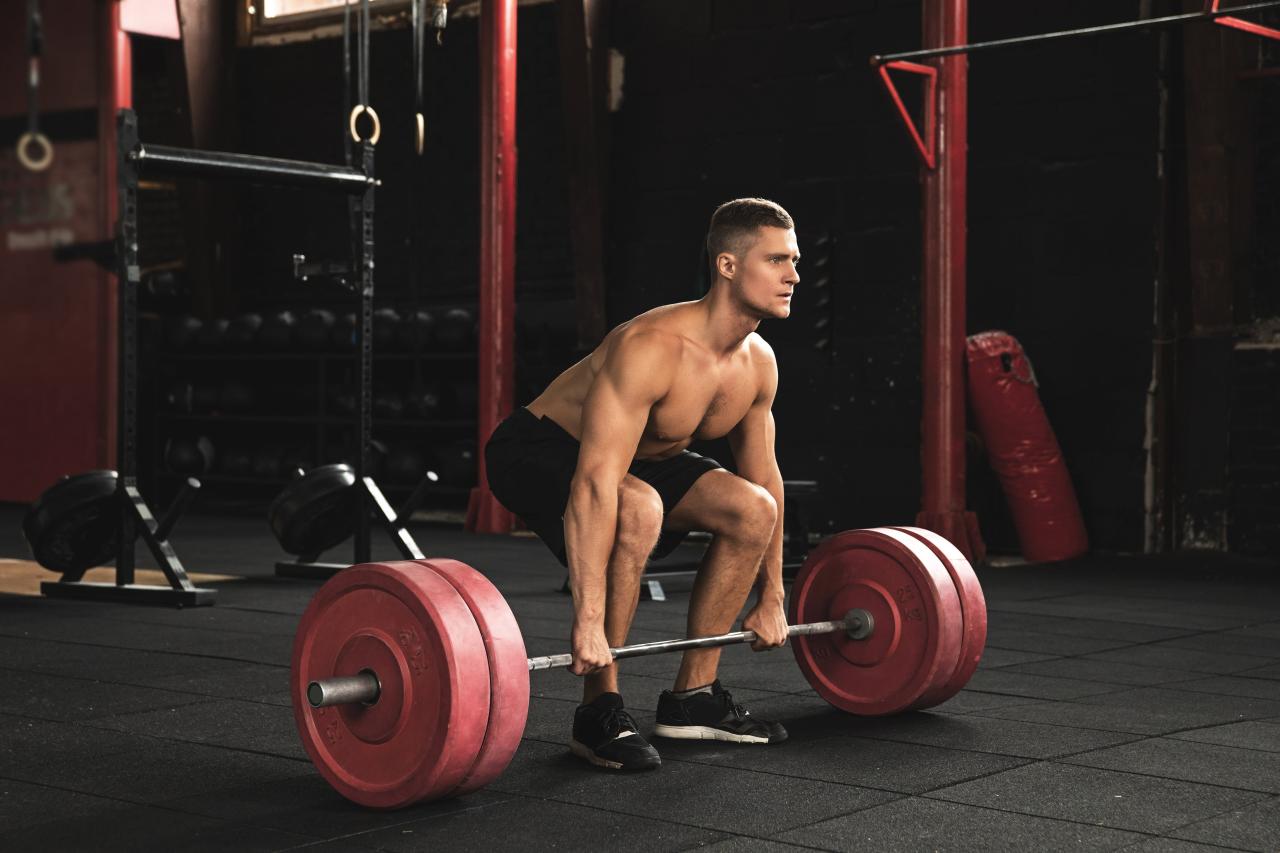






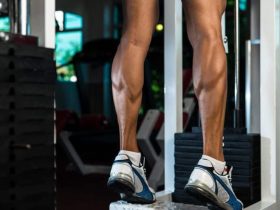





Leave a Reply